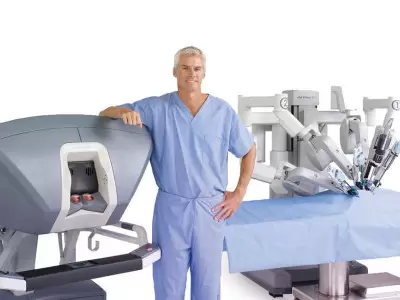Palatal Surgery in Snoring and Sleep Apnea
Surgical Interventions Intended for the Soft Palate
In surgical interventions made in this area, the objective is to increase the size of the air passage behind the uvula and soft palate, and reduce the collapse or vibration tendency of the soft tissues.
Because 75% of patients diagnosed with sleep apnea have soft palate and uvula problems to a moderate or great extent, soft palate region is the most commonly operated region. On the other hand, the problem is limited to this region in only one quarter of patients, almost half of whom are diagnosed with also problems in the tongue base or nasal passages besides the palate.
Type of surgery to be performed on the soft palate varies depending on the severity of the problem and the cause of blockage in the air passage. When making a decision on the intervention, uvula, soft palate, lateral pharyngeal bands, and tonsils should be carefully assessed in addition to sleep analysis. Since the fact that the narrowness occurring in the air passage is in the front-rear, right-left or circular plan affects the selection of the surgical technique, all the patients for whom a surgery is planned should be assessed with sleep endoscopy before surgery, and the location and type of the problem should be clearly ascertained.
1. Soft Palate Radiofrequency Interventions
It is based on the principle of creating a heat damage that heal up with shrinkage and hardening in the underlying tissues of the mucosa and the palate muscles, by giving energy into the soft palate tissue through radio frequency devices. As a result, the volume of the soft palate as well as its tendency to vibrate and collapse due to the vacuum created by the air flow decrease. This operation can be done under general anesthesia in an operating room, or under local anesthesia as an office procedure.
It is preferred in patients with limited thickening and sagging in their soft palate, who generally complain of snoring but have no significant apnea problems; or in patients who have a soft palate problem but in whom the extract pathogen causing apnea is in another region. In eligible patients, the success rate of palate radiofrequency procedure is about 40-50%, and 2 to 4 sessions are required to be repeated for achieving a result.
2. Pillar Implant (Placing Implants into The Soft Palate)
The Pillar Implant procedure is a process that involves placing small implants into the soft palate muscle layers, with intent to reduce the vibration of the soft palate that is effective in the noise of snoring and also reduce the looseness that causes blockage in the air passage. When placed, these implants provide structural support to the soft palate. In the course of time, the body's natural tissue merges with the implants; and this increases the structural integrity and harness of the soft palate, in such a way as to prevent the vibrations that cause snoring sound.
The pillar implant procedure is a process generally suitable for patients who have a mild snoring problem related to the soft palate, and it is not recommended for patients with an apnea problem related to the soft palate. The procedure can be carried out alone but can also be performed in combination with other surgical procedures intended for the treatment of snoring and apnea. As is the case with radiofrequency procedure, the pillar implant procedure gives better results in patients with a body mass index lower than 25.
3. Uvulectomy (Surgical Reduction of the Uvula)
The function of uvula located in middle line of the soft palate is to ensure the food to go toward the upper part of the esophagus, prevent food from entering the nasal passages, in company with the soft palate, and facilitate the drainage of nasal mucous secretions toward the esophagus.
Intense vibration that occurs during severe snoring may cause the uvula to get longer and thicker in the course of time. In a small percentage of patients, the cause of snoring and sleep apnea is a long and/or thick uvula alone. Thus, shortening the uvula (uvulectomy) alone is adequate for treatment in highly selected patients. Despite being rare, bleeding is the most important problem that can be encountered after uvulectomy.
4. Laser Uvulopalatoplasty
The most important problem of laser surgery is severe postoperative pain. This disadvantage caused the technique to be largely abandoned in recent years.
5. Classic Uvulopalatopharyngoplasty (UPPP) and Modern Soft Palate Surgeries
The most frequently performed surgical interventions in patients diagnosed with sleep apnea are surgical operations intended for the soft palate. The purpose of soft palate surgeries is to reduce the volume constituted by uvula, soft palate and tonsils, and to widen and tighten the air passage behind the soft palate.
In the period when classical palate surgeries called “uvulopalatopharyngoplasty” (UPPP) were defined for the first time, surgical techniques differing from each other were defined over time by considering their postoperative difficulties and disadvantages for patients, based on the patient’s anatomical structure and the contents of problems.
Surgical interventions intended for the soft palate can alone succeed in 85% of patients with mild snoring problems, and in 25 to 75% of patients diagnosed with sleep apnea.
Surgical interventions intended for the soft palate can alone succeed in 85% of patients with mild snoring problems, and in 25 to 75% of patients diagnosed with sleep apnea. Patients most commonly encounter postoperative pain, and mostly complain about it. Postoperative pain significantly manifests itself in the first 5-7 days after surgery, and abates gradually. Dry mouth, stretching sensation, throat blockage, and post-nasal drainage that can be a cause for complaint in the long term are caused by the inability of uvula to do its job.
Today, the classical UPPP surgery that involves the complete removal of the uvula as well as the soft palate tissues is less preferred with each passing day; and the surgical technique to be used is determined based on the content of the problem, after the assessment made with sleep endoscopy. For patients, in whom the soft palate has been found to collapse in only the frontal plan in such a way as to cause blockage, usually certain techniques such as intrapalatal resection (removing some tissues from the soft palate) and transpalatal advancement (removing some part of the rear section of the hard palate, and then pulling forward the soft palate) are preferred; and for patients who have peripheral constriction in the left-right plan, uvulopalatal flap, lateral pharyngoplasty, and Z-palatoplasty (changing places of some soft tissues in the palate) techniques are used. Expansion sphincter pharyngoplasty is the most preferred technique in cases where the air passage behind the soft palate is narrow, and if the patient has previously had a tonsillectomy.






Comment
Your Contact Information will not be shared in any way. * Required Fields